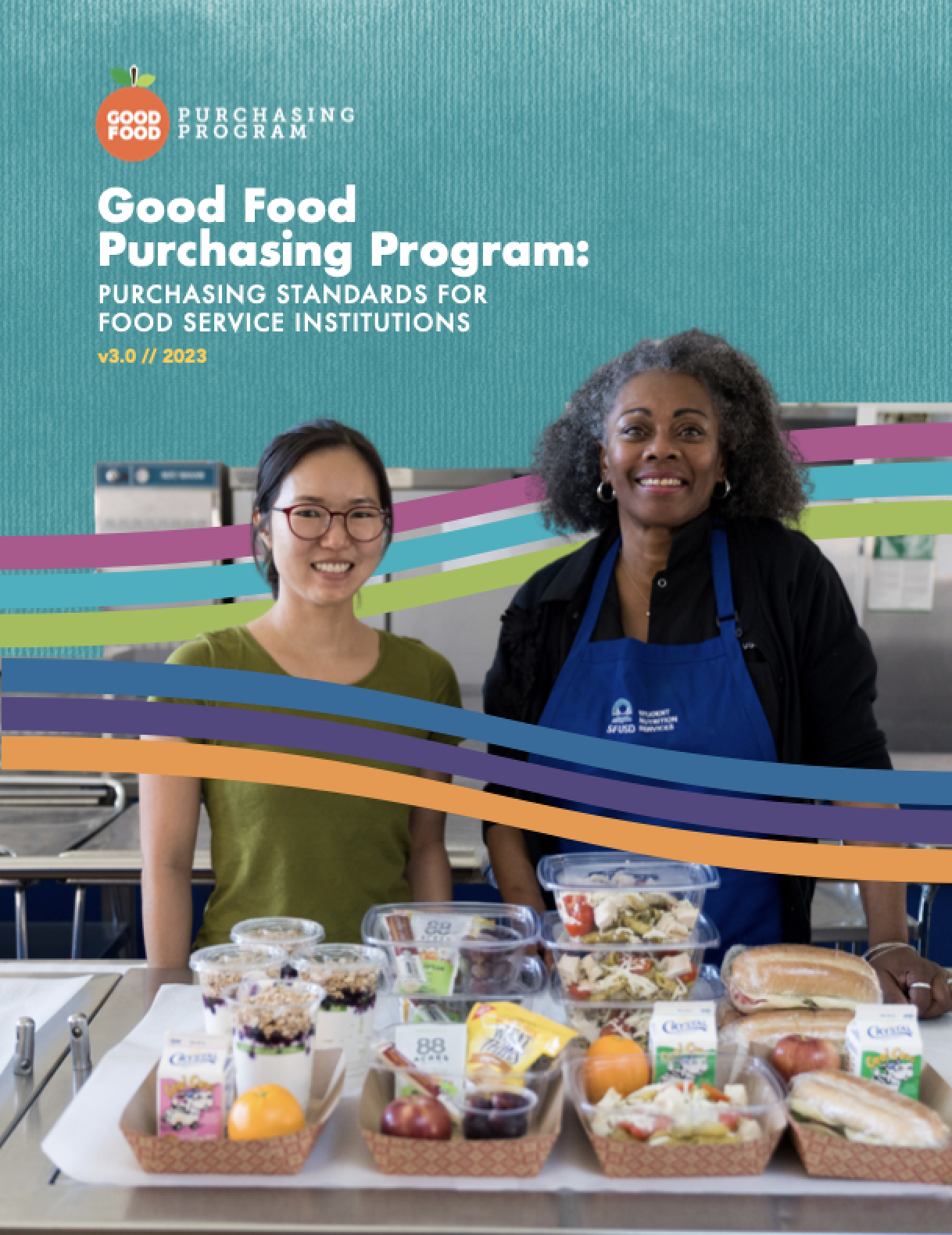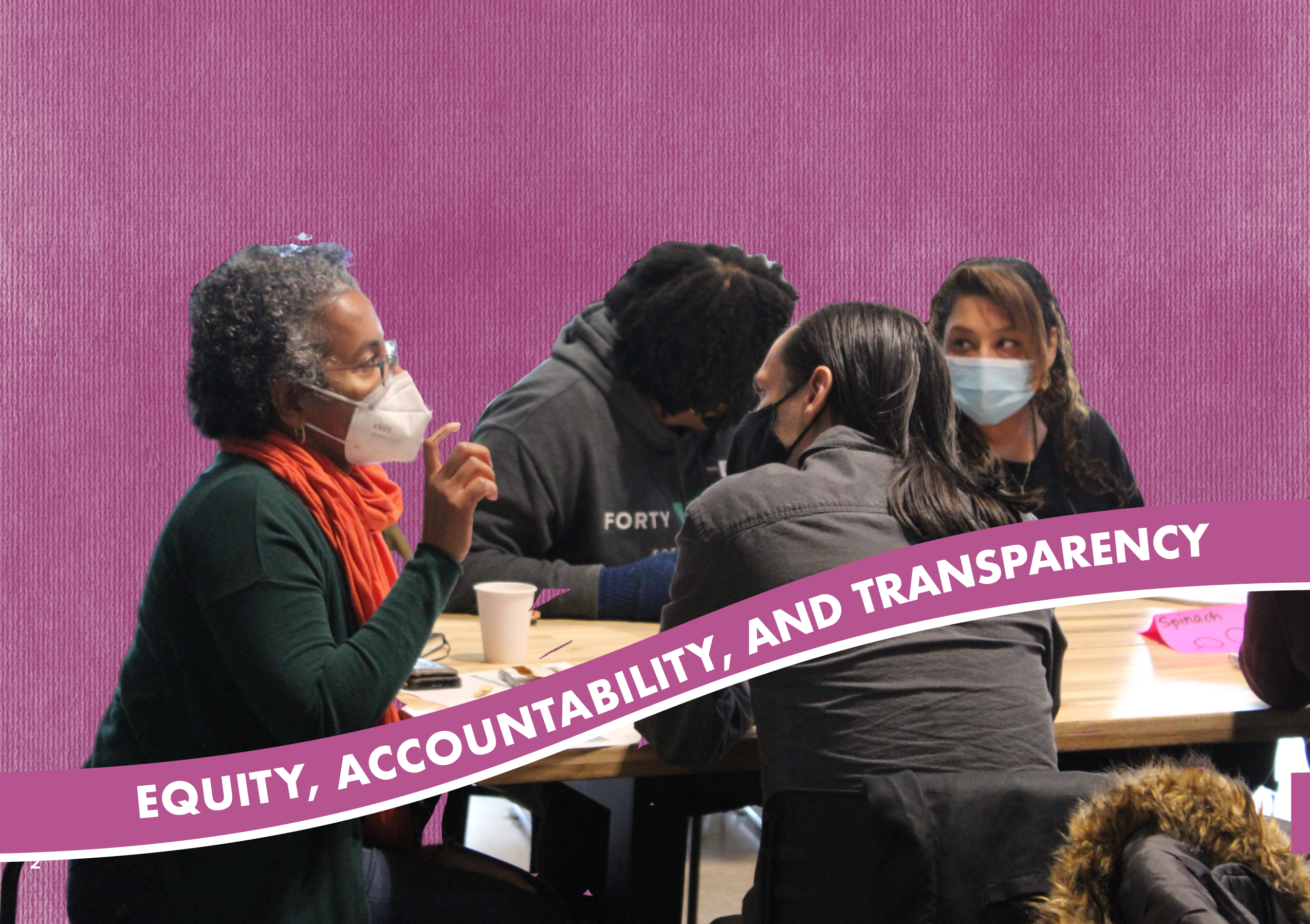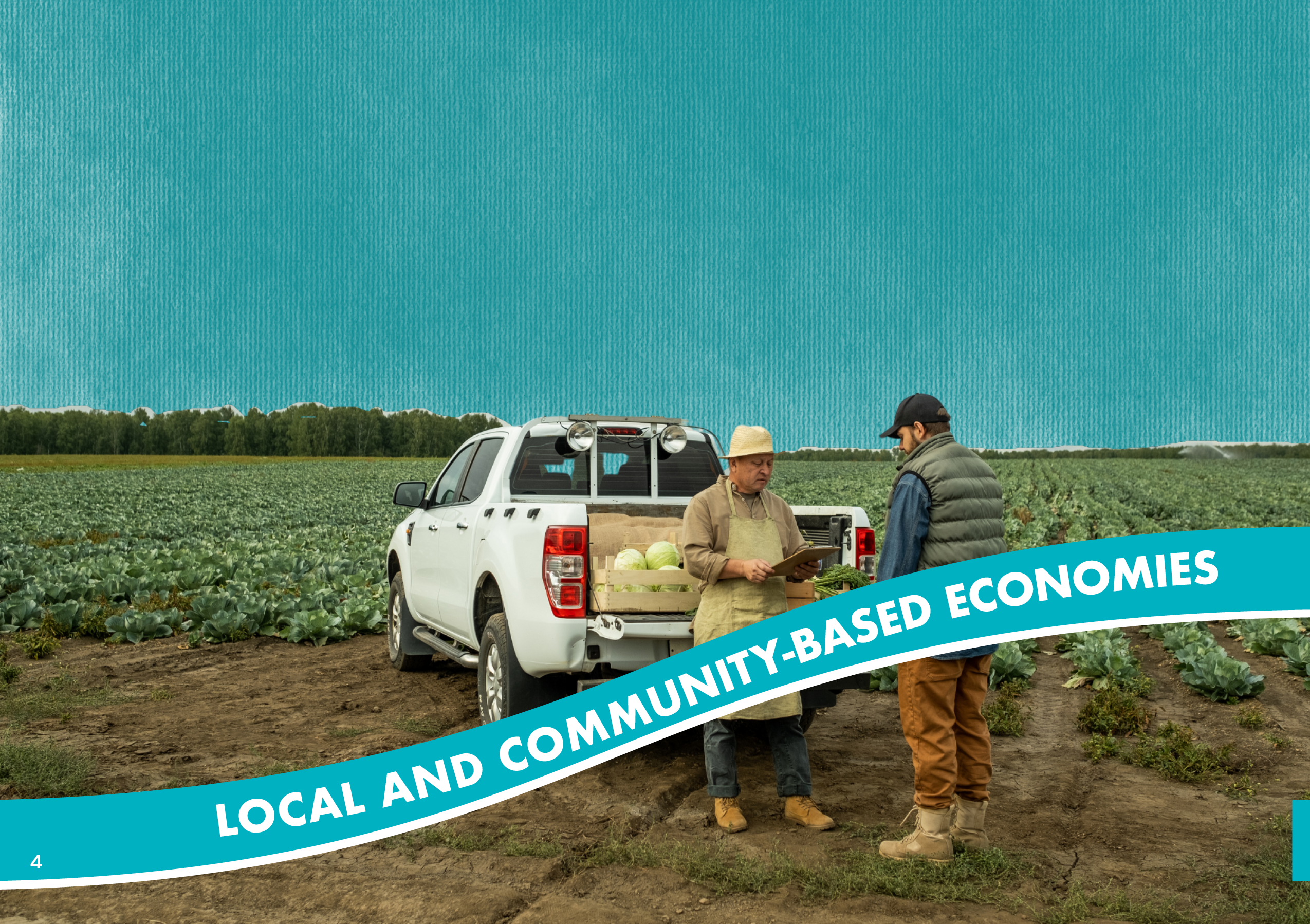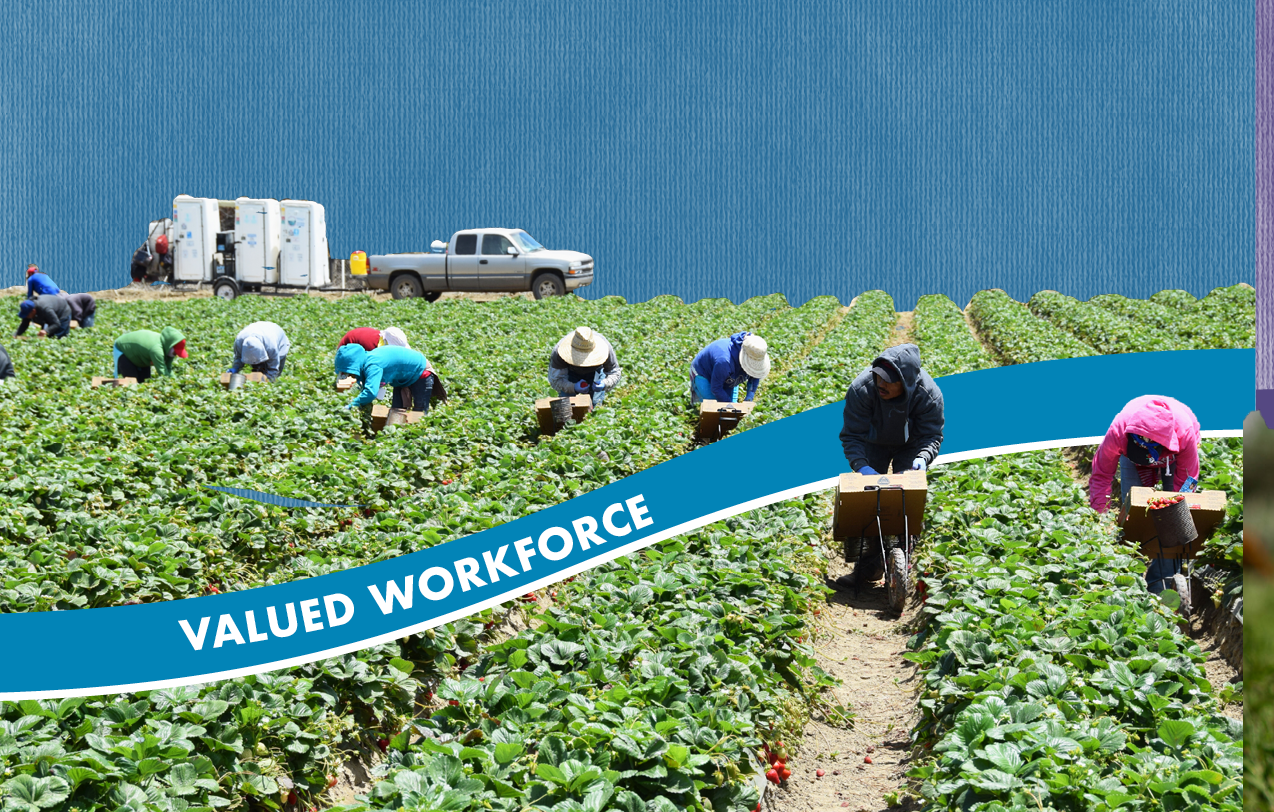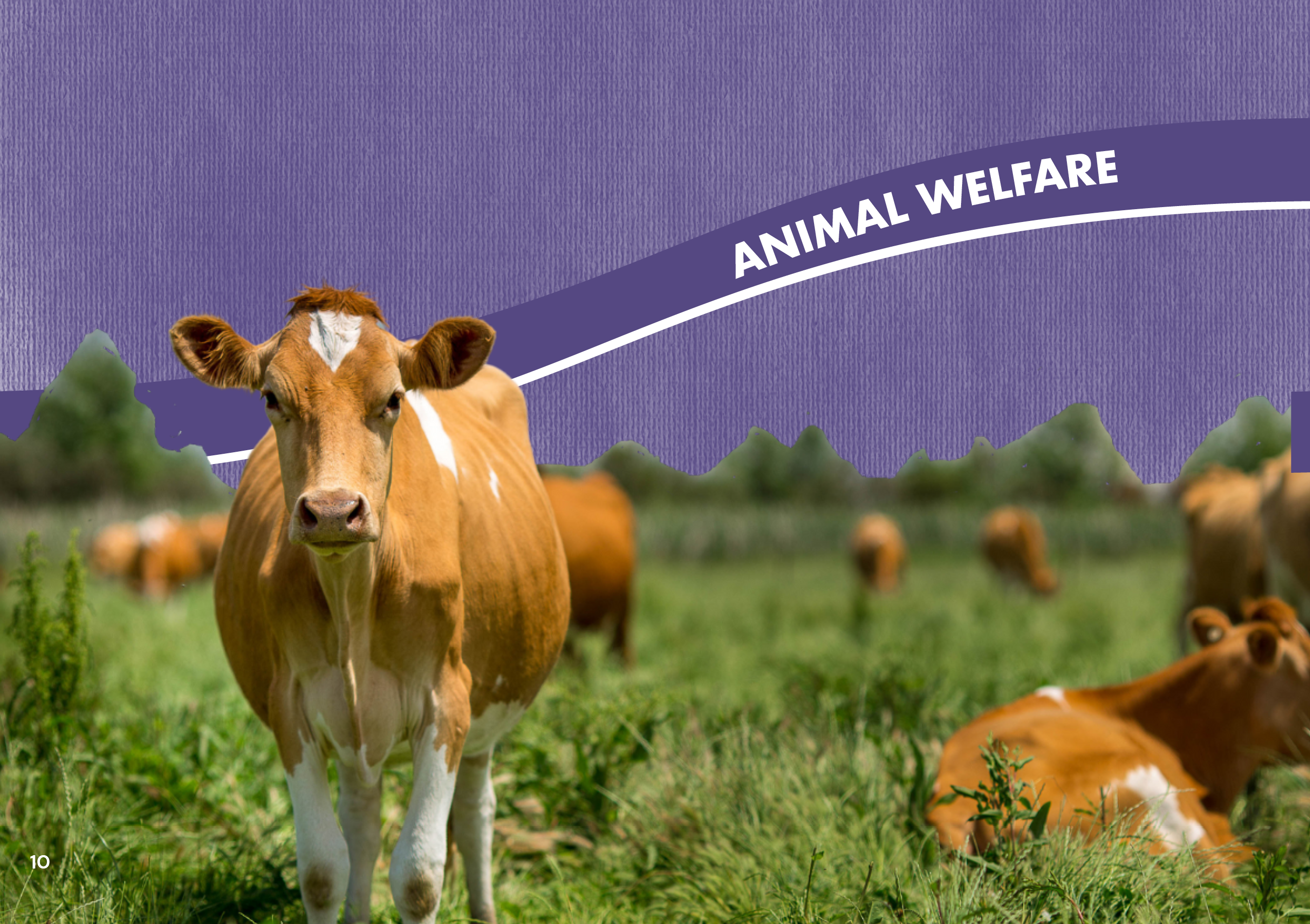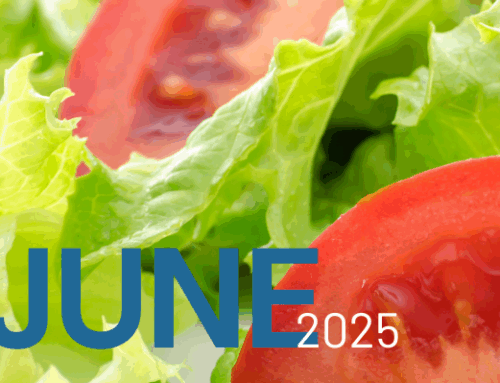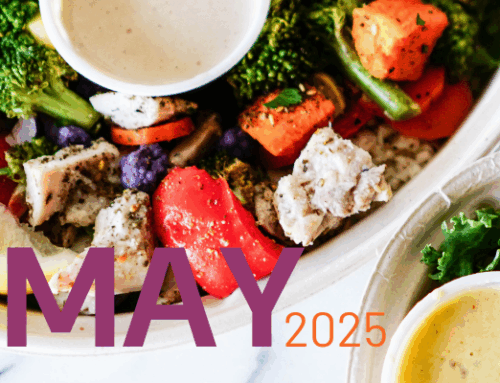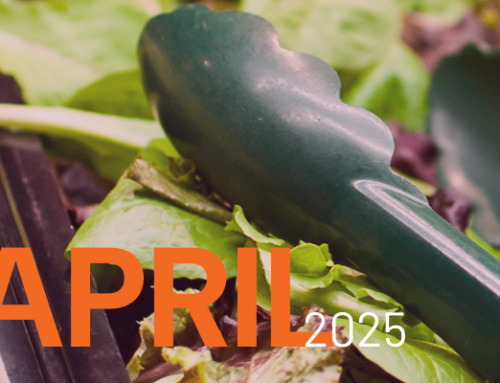Ten years since the first release of the Good Food Purchasing Standards for Food Service Institutions, we are pleased to present Version 3.0. We offer the Purchasing Standards as one tool to help us realize our collective vision of a transparent and equitable food system, through the lens of public procurement.
As more and more people have joined and co-created this movement, the Purchasing Standards have evolved. Version 3.0 reflects the wisdom and expertise of our many partners—with contributions from nearly 300 individuals and organizations in the Good Food Purchasing Program network during the drafting period and over the course of the last five years.
Some key changes you’ll notice include:
- Updates to performance recognition, including a switch to Good Food Leader and the addition of tiers of performance (Gold, Silver, Bronze). These changes are intended to reflect that many institutions are taking leadership in the Program and within their institutions, even before they are able to achieve the highest level of program performance. The levels of performance still require an equal weight to each of the five program values and progression over time, critical features of the Good Food Purchasing Program.
- New Equity, Accountability and Transparency requirements that encourage practices that are fundamental to a successful values-based purchasing initiative: community engagement, supplier diversification, a policy commitment, and transparency.
- Addition of targets in Local and Community-Based Economies for sourcing from People of Color and suppliers who have experienced negative systemic social and/or economic impacts.
- New strategies that reflect how institutions are actually implementing the values in practice, including hybrid options for meeting targets in Environmental Sustainability and Animal Welfare by both increasing purchases of qualifying items and reducing carbon/water footprint or animal product purchases.
- Strengthened guidance around Valued Workforce standards with an aim to deepen the impact of implementation on outcomes for workers (e.g. incorporation of contractual commitments for vendors around labor law compliance and sanctions for non-compliance).
- Expanded Community Health & Nutrition requirements, including the addition of a target for increasing whole and minimally processed food purchases over time.
The Good Food Purchasing Program has united thousands of advocates, policymakers, funders, value chain businesses, and public institutions around the idea that public food dollars can and must serve the public good. The framework has been adapted in a multitude of beautiful, creative, and strategic ways by changemakers committed to the idea that extraordinary things can happen when you have a “North Star” like the Good Food Purchasing Standards and a process that leaves no one behind.
We extend our deepest gratitude to each person who has shaped the Good Food Purchasing Program vision and offered input to ensure that Version 3.0 of the Purchasing Standards reflects that vision. Here’s to the start of the next phase of our journey as we continue to stretch and grow together.
In collaboration,
The Center for Good Food Purchasing
